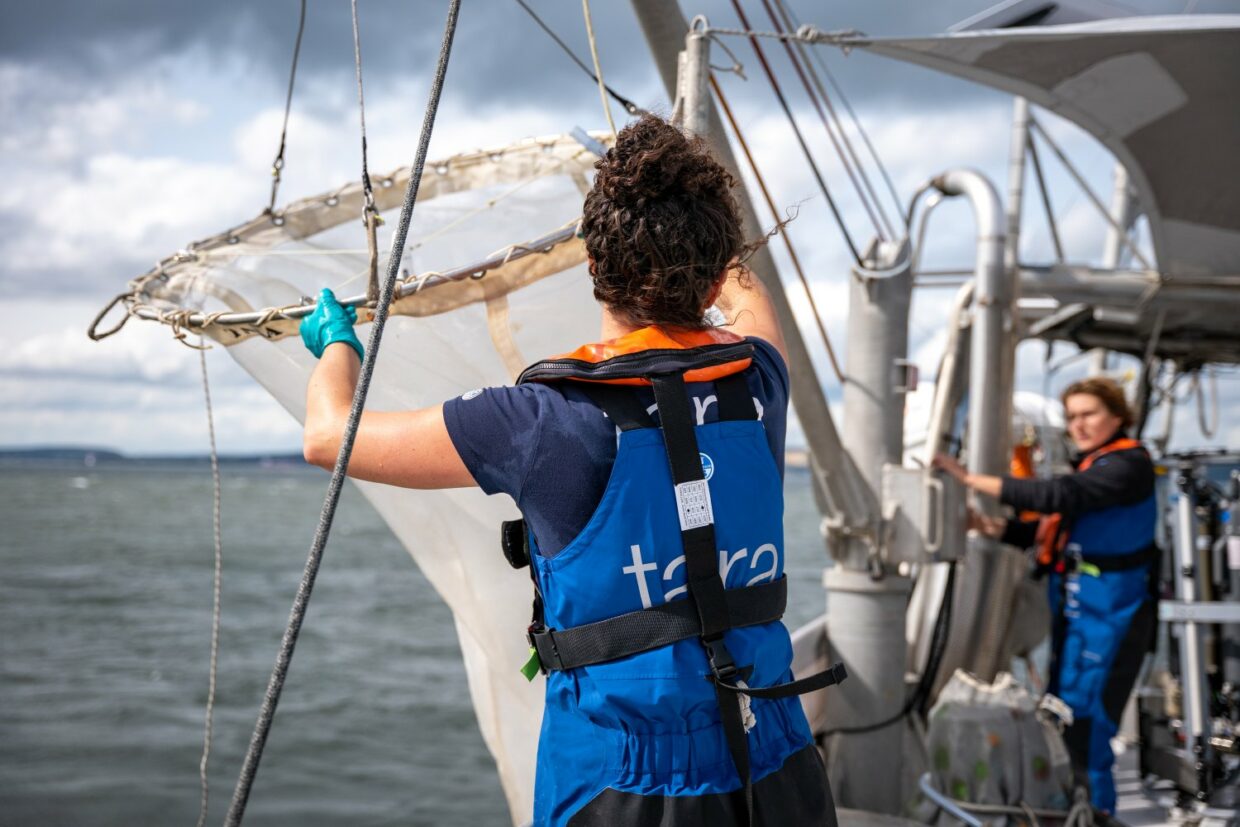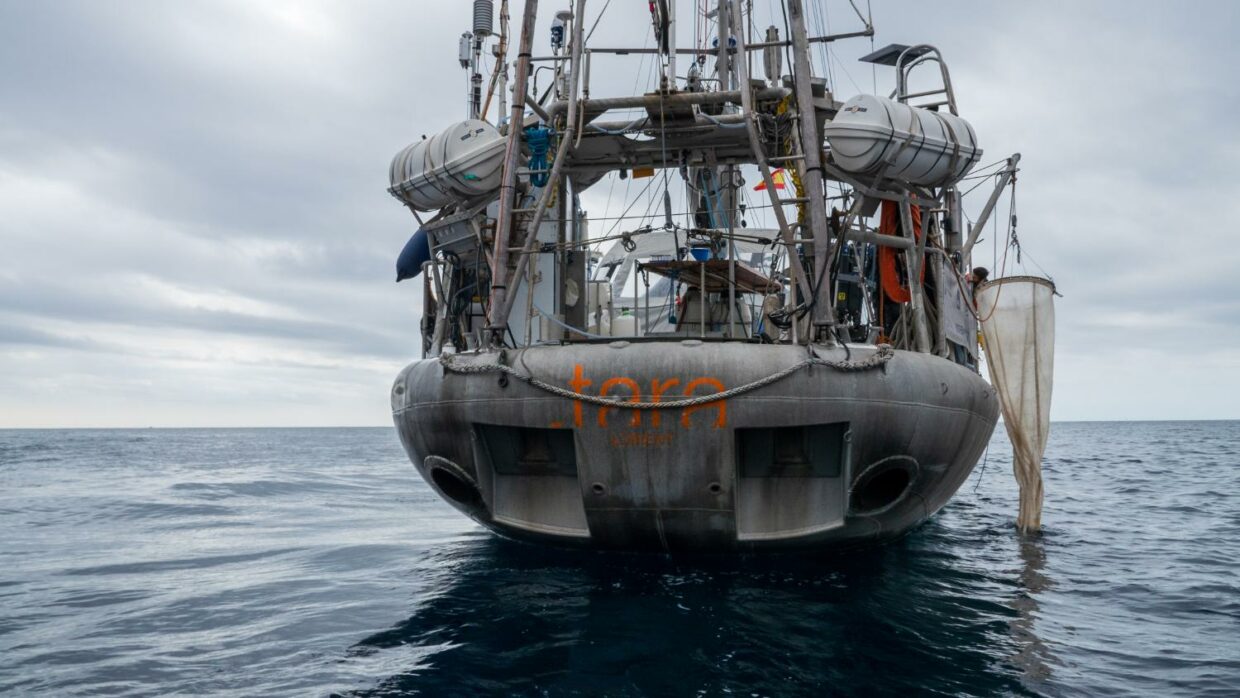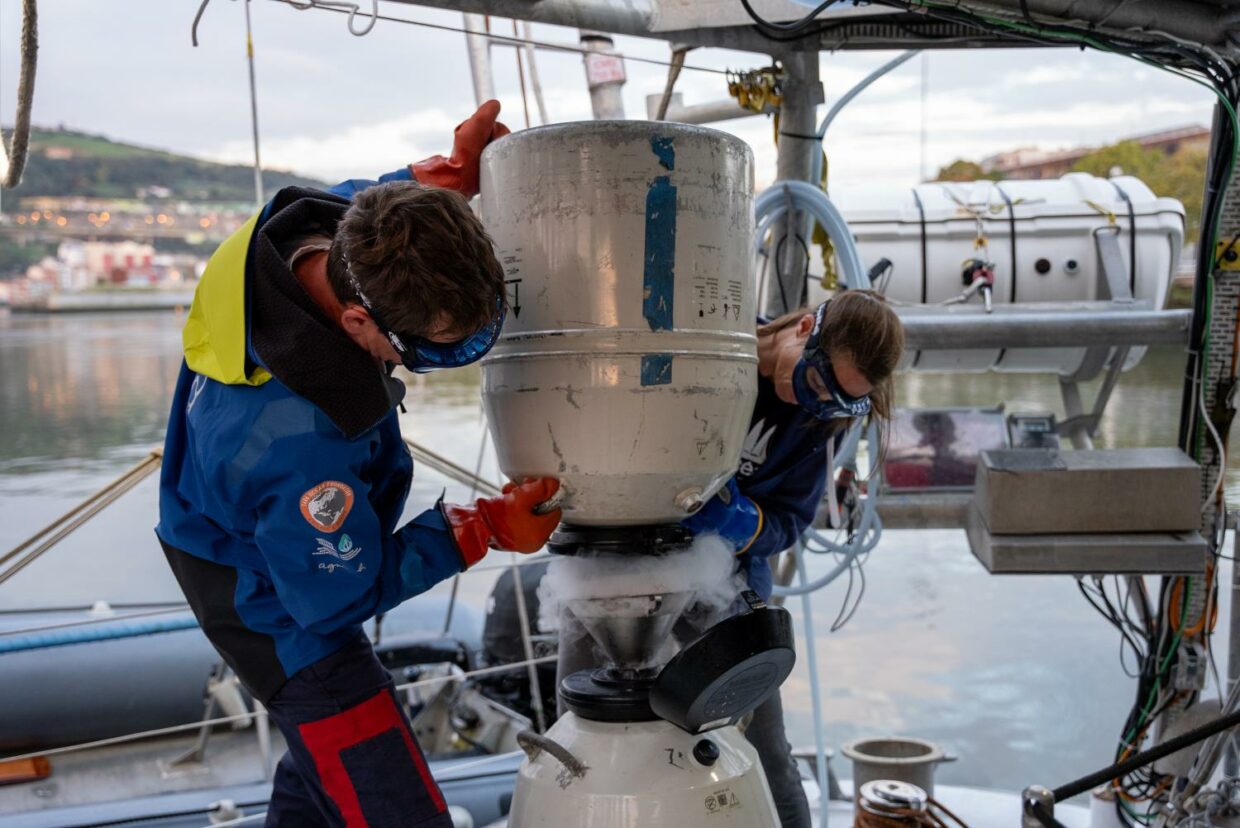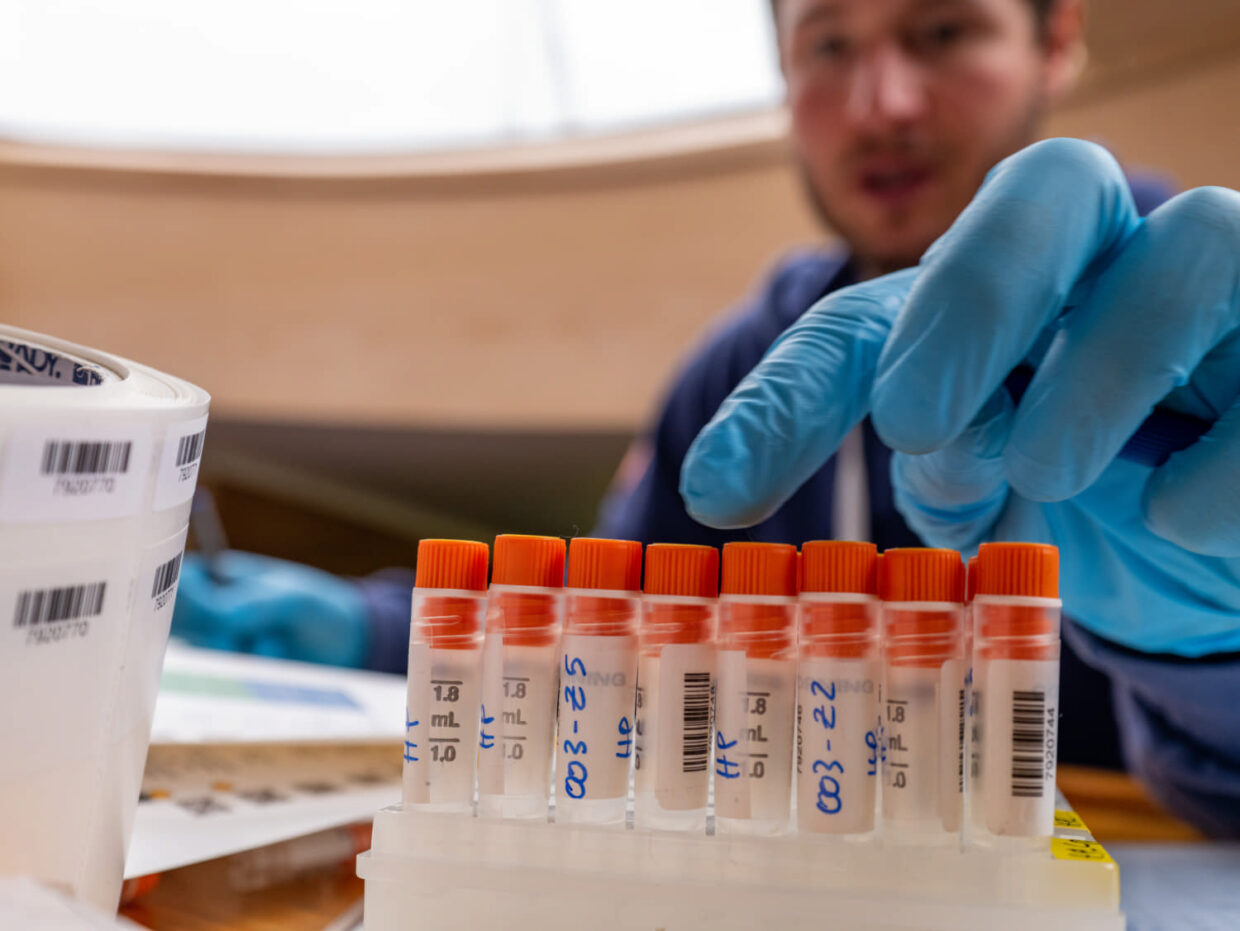From Ocean to science: the journey of a Tara sample
Each sample taken is a key to a better understanding of the ocean, its biodiversity and our planet. Behind these major discoveries lies a rigorous and meticulous process, involving months of preparation, orchestrated logistics and years of research. From the selection of the sampling site to the publication of the results, this article retraces the odyssey of a sample taken by the Tara schooner.

Aboard the schooner Tara: the quest for samples
Selection of the study area and sampling
It all starts with an in-depth study of the maps and satellite data to identify the schooner’s precise station. Certain regions are chosen on the basis of observable phenomena, such as phytoplankton blooms. Once the area has been determined, the schooner positions itself for the sampling and chooses the appropriate tool for the type of sampling required. Each net used has a specific objective:
At depths of up to 1,000 metres, the nets remove a large volume of water and specific types of organisms depending on the size of the net:
- The Manta net is used to capture floating microplastics at the surface.
- The Regent net is designed to collect large zooplankton and fish larvae (680 microns) from 200m to the surface.
- The Bongo net collects micro-organisms of 20 microns (phytoplankton) and 200 microns (zooplankton).
Rosettes collect smaller samples and provide precise data on the physico-chemical context of the samples.
- The CTD Rosette samples organisms smaller than 20 micrometres at various depths (small phytoplankton, bacteria and viruses) and measures parameters using sensors (pressure, temperature, conductivity, oxygen levels, carbon pump, etc.). It can dive to depths of up to -1,000m.
- The Geotrace Rosette measures tiny quantities of elements such as trace metals (iron, copper, zinc, etc.) present in the water. Like the CTD Rosette, it can sample down to -1,000m to characterise the environment at different depths.
One station translates into 7 nets deployed, around 300 samples collected and 13 rosette dives.

Tara’s strength lies in systematically repeating the same protocol for each sample, all over the planet. The result is an incomparable set of data.
On-board analysis and storage
The sample collected is then filtered to extract the elements required and analysed in one of the three laboratories on board. For example, if the study concerns plankton, the water is filtered to retain only the organisms.
If you want to study plankton, you filter the seawater and keep only the filter. It can be preserved in 5 ml test tubes, which can be stored by the thousands on board.
Each sample is then given a unique barcode, allowing seamless traceability throughout the process. Time is a critical factor: filtration and conditioning are carried out within 15 minutes to a few hours after sampling.
Storage at sea on board the schooner requires rigorous conservation, and samples are stored there for around two months, under precise conditions depending on their nature:
- At room temperature to study salinity.
- In liquid nitrogen at -196°C to preserve the integrity of the genetic material of planktonic organisms. DNA and RNA, the molecules analysed by genomics techniques, are fragile molecules that degrade rapidly over time.
These strict conditions ensure that the samples arrive intact at the onshore laboratories.

Time to disembark
When the schooner docks, the samples are unloaded and transported to a logistics hub where they are inventoried and stored. This transfer is carried out by specialists in the transfer of biological material, scrupulously ensuring that conservation conditions are respected. These few days are crucial, as they represent the fruit of months of work on board the boat, which are now in the hands of the logisticians.
At the hub, the samples are sorted according to the specialities of the partner laboratories, located in different countries. For example, the study of phytoplankton is entrusted to French experts.
In our partner laboratories: focus on Genoscope
Receiving samples
As soon as they arrive at the laboratory, the samples are handled with care, scrupulously respecting the cold chain in order to preserve their integrity. They are catalogued, checking their number and collection site one by one, as traceability is essential. For the schooner’s latest expedition, Tara Europa / TREC, a total of around 70,000 samples were collected, of which a thousand are currently being processed by Genoscope, the national sequencing centre in Évry. Genomic studies are being carried out there, with the aim of examining their DNA in detail, which contains all their genetic information.s.
After this meticulous inventory, each sample is stored at -80°C until it is analysed. A database is then created to record the precise location of the samples in the boxes and freezers.

Sample processing and analysis
Before any analysis is carried out, several steps are necessary. The DNA and RNA are first extracted from the cells, then undergo a purification and elution process (re-solution of the molecules) to obtain a pure solution. Quality control is then carried out to assess the quantity and integrity of the nucleic acids in the DNA and RNA. This will determine whether the library preparation protocol will be carried out manually in tubes if quantities are small, or by robot on 96-well plates if quantities are sufficient.
Libraries – DNA sequences ready to be analysed and read by the sequencer – are created by fragmenting the DNA, followed by the addition of adapters to the ends of the fragments. A unique index, similar to a barcode, is also applied to ensure the traceability of each sample.
Once the libraries are ready, they are placed on a Flow Cell, a glass slide inserted into a sequencer that will decode the DNA or RNA. Once the sequences have been obtained, their quality is checked and they are re-assigned to the corresponding samples.
From Ocean to science: scientific publishing
This genomic data is then made available to the scientific community. The final stage, often several years after the sample was taken, is analysis and interpretation by researchers. This is followed, if something important is discovered, by the writing of a scientific article, which is then peer-reviewed, corrected and published in a scientific journal, thereby contributing to the advancement of knowledge in biology and the genetics of Life.
More than 5,000 scientific publications have been published following the study of data gathered during Tara Ocean Foundation’s expeditions.
One of the latest scientific publications to use data from the Tara Ocean Foundation concerns the perception of light by phytoplankton, and the research was made possible by samples taken during the Tara Oceans expedition.